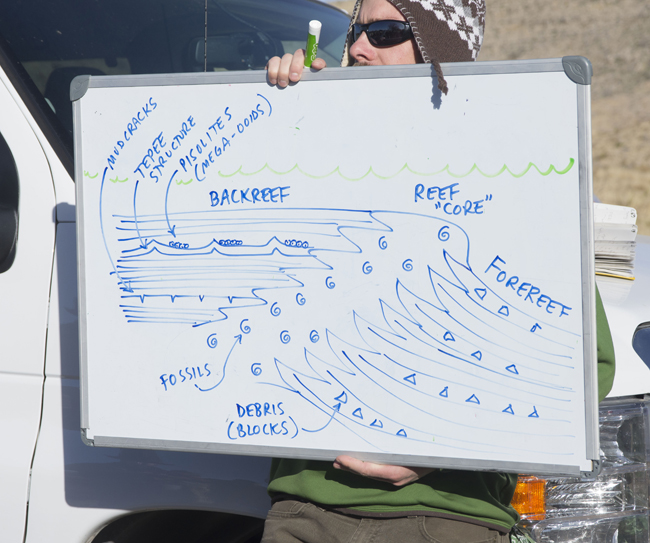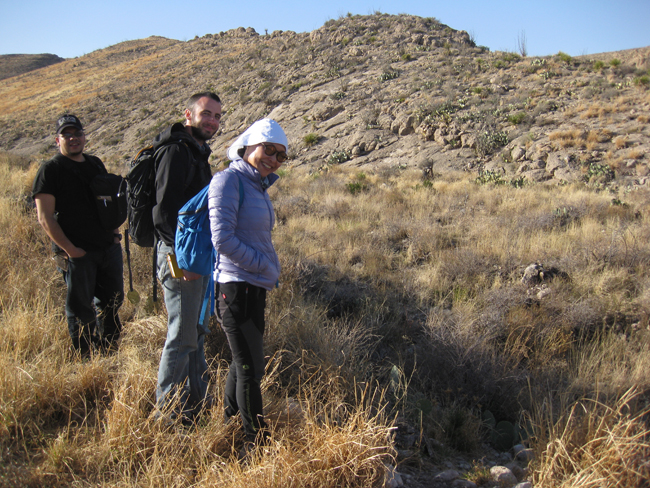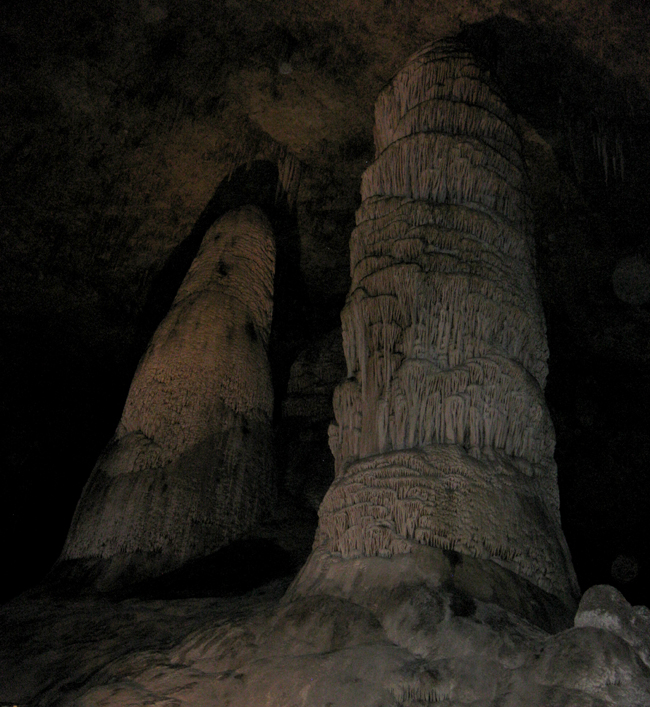Today, let’s harken back 11 months, to when a dozen students and I flew to El Paso for a week of geologizing with Joshua Villalobos and a dozen of his El Paso Community College students.
We visited the Permian Basin of West Texas and southern New Mexico. Here’s a diagram of the situation that existed here during the Permian: it was a high-bathymetric-relief reef system. There was a reef core of sessile, skeletal organisms like corals and brachiopods, and then a deeper forereef basin which received periodic submarine landslides.

What I propose to focus on today, however, is the backreef – that shallow lagoonal environment which saw high rates of evaporation. There, the seawater crystallized, precipitating out CaCO3 that coated any little nugget to make really large free-rolling concretions called pisolites. They’re basically enormous ooids:


(Villalobos thumb for scale)


These structures are part of the backreef Tansil Formation.


This one had a little mite on it for scale:

We explored these wonders in detail at a commercial campground just outside of White’s City, New Mexico, not far from the boundary of Carlsbad Caverns National Park. Here are two macro GigaPan of samples I brought back home from there:
If you explore those images, you’ll find ample evidence that the pisolites accumulated layer after layer, then were broken into chunks, then the chunks accumulated layer after layer, and then some of those were broken again, and recoated (with layer after layer) again. Historical geology writ small!
Students in front of the ridge where the pisolites can be found as float:

We did visit the park itself, too…

Descending into the maw…

There are some fine speleothems inside, as Tansil Formation calcite is removed from location A and redeposited by groundwater at location B:

I won’t be running a spring break field course this year, and while I’m looking forward to using the break as a break (i.e., rest), I’ll certainly miss having adventures and making discoveries of stuff like we saw at Carlsbad.


Sorry you’re not running a spring-break field course, but you certainly deserve an occasional rest. I enjoyed this blogessays, particularly the imbedded gigapan photos. I just read a related article in the Smithsonian Magazine, Jan 2015, p.70.on the fossil reef in Guadalupe Park and El Capitan.
Enjoyed your website. Finally this novice has hopefully identify a pisolite sedimentary rock. Probably doesn’t sound like a big deal to someone who is educated in the field of geology; but to a novice it was exciting. We enjoy hiking along a fault line on my fathers farm in the foothills of the Appalachian Mountains. We have wondered what the identity of the unusual rocks that had spheres embedded in them. We only seem to find them along the fault line. Some of the rocks even appear to have been some type of hot flowing material that was frozen by something. We sent a picture to the geography department of my Alma Mater and was told our rock was a common sedimentary rock. We showed our rocks to a volcanologist and they thought it was a rock with fossils. We are glad to have found your blog.